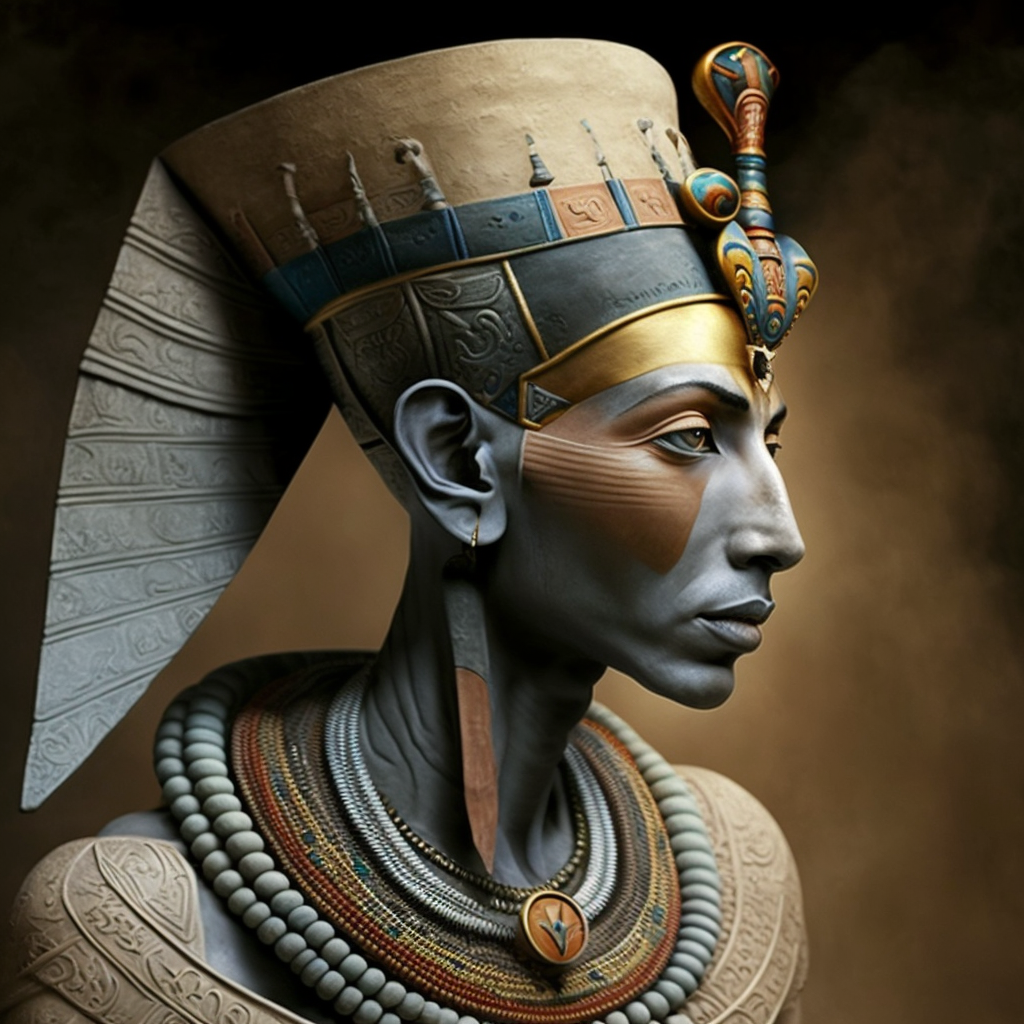Pharaoh Akhenaten
First pharaoh who introduced the worship of Aten


Akhenaten, also known as Amenhotep IV, was an enigmatic pharaoh who ruled over ancient Kemet (Egypt) during the 18th dynasty. He is known for his radical religious reforms and his introduction of the worship of Aten, the sun disc.
Akhenaten was born to Pharaoh Amenhotep III and his chief wife, Queen Tiye, in Thebes, around 1353 BCE. He grew up in a royal household and received an education in the traditional arts of ruling, including military strategy, diplomacy, and administration. He married Nefertiti, who became one of his closest advisors and the mother of his six daughters.
When Akhenaten came to the throne, he initially ruled in a manner consistent with his predecessors. However, around the fifth year of his reign, he began to implement his religious reforms, which involved the replacement of the traditional polytheistic religion with the worship of Aten, the sun disc. Akhenaten saw himself as the sole mediator between Aten and the people and constructed a new capital city, called Akhetaten, or Horizon of Aten, to reflect his new religious beliefs.
During his reign, Akhenaten also initiated several building projects, including the construction of a series of palaces and temples at Akhetaten. He also commissioned a number of artworks that depicted himself, Nefertiti, and their daughters in a style that was radically different from the traditional art of ancient Kemet. This style, known as Amarna art, featured elongated figures with exaggerated features and a naturalistic approach to portraiture.
Akhenaten's religious reforms and his focus on his new capital city led to tensions with the traditional centers of power in Thebes, and there is evidence that he faced opposition from some members of the royal court. Nevertheless, his reign was characterized by a degree of stability and prosperity, and his reign is remembered as a time of artistic and cultural innovation.
After Akhenaten's death, his son, Tutankhamun, became pharaoh. Tutankhamun was a minor at the time of his father's death and it is unclear to what extent he continued his father's reforms. Nevertheless, Akhenaten's legacy continued to influence subsequent pharaohs, and his reign remains a subject of fascination and study for historians and Egyptologists today.
In conclusion, Akhenaten was a pharaoh who introduced radical religious reforms and the worship of Aten, the sun disc. He grew up in a royal household and came to power through his role as pharaoh. During his reign, he initiated several building projects and commissioned artworks that reflected his new religious beliefs. Although he faced opposition from some members of the royal court, his reign was characterized by a degree of stability and prosperity, and his legacy continues to be studied and debated today.

Like this content? Feel free to comment & share!